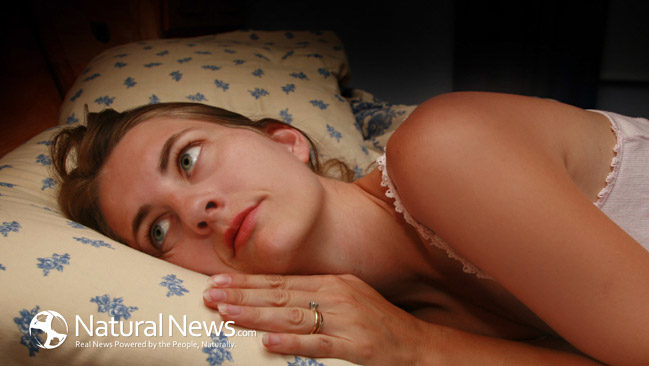Our culture doesn’t place much value on sleep. How often have you thought that sleeping is a waste of time or heard someone utter “I’ll sleep when I’m dead”? If you don’t sleep well, you could be dead a lot sooner than you might like.
Not getting enough sleep has been found to increase increase rates of obesity, diabetes, heart disease, and even overall death rates. It’s that important.
In 1960, 2% of the population slept less than six hours, now 35% sleep less than that.
A poll by the National Sleep Foundation found that 43% of Americans between the ages of 13 and 64 say they rarely or never get a good night’s sleep. 60% say that they experience a sleep problem every night or almost every night. About two-thirds say their sleep needs are not being met during the course of the week. (1)
Why can’t we get to sleep? A big part of the problem is artificial light.
It wasn’t that long ago that people got up with and went to bed with the sun.
But now we get too little natural daylight during the day, while we’re exposed to artificial light all evening long.
Circadian Rhythm Disruption (CRD)
This unnatural pattern of light exposure disrupts your circadian rhythm leading to a fancy-sounding malady — chronodisruption or Circadian Rhythm Disruption (CRD).
The negative effects of CRD have been widely studied by one industry — the airlines. The Federal Aviation Administration, as you can imagine, is very concerned with how lack of sleep and jet lag (a form of CRD) affect pilots. (2)
The FAA warns pilots to watch out for the following symptoms of CRD:
- Insomnia
- Difficulty concentrating, staying alert, or accomplishing mental tasks
- Increased negative moods and mood swings
- Irritability
- Apathy or reduced interest
- Impaired sensory perceptions
- Impaired decision making
- Slowed reaction time
- Tendency to avoid personal interactions
- Increased frequency and severity of piloting errors
You can see how deadly serious this issue can be. No one wants to fly in a plane with an exhausted, apathetic pilot prone to making errors!
We’re all subject to the same set of symptoms when our sleep cycle is disrupted.
I don’t want to get up with the chickens and go to bed with the sun any more than you do. Here are some simple ways to overcome sleep problems caused by artificial lighting.
Good Morning, Sunshine
It seems unrelated, but your exposure to light in the morning affects how well you’ll sleep that night.
Being outside in the morning for 15-30 minutes increases your body’s melatonin production (a natural hormone that regulates your sleep cycle) at night.
If getting morning sunshine is difficult, you can use a light box to help reset your circadian rhythm. This is especially helpful if you also have Seasonal Affective Disorder. Light boxes have been found to work better for this condition than prescribed drugs!
If you don’t have time to get light exposure in the morning, there’s a really innovative idea that’s popular in Europe but has just made its way here — Valkee Bright Light Ear Headset. Unlike SAD lamps, this ear headset is easily transportable and studies have shown you can get the same effects as using a light machine in a fraction of the time. This device was developed in Finland, where people have serious problems with lack of sunlight.
Our Electronics are Destroying Our Sleep
Artificial light of all kinds is disruptive to sleep, but by far the biggest offender is the blue light emitted from computers, smartphones, TVs, and iPads.
Here’s how the ways electronic gadgets we love are ruining our sleep:
- First they give off light that’s very similar to sunlight. This sends a signal to your brain that it’s daytime — even at night. This shuts down melatonin production.
- This melatonin suppression conversely increases the production of the stress hormone cortisol and the hunger hormone gherlin, leading to nocturnal raids on the fridge.
- Electronics in the bedroom deal your brain a double whammy. Besides giving off blue light, their electromagnetic fields disrupt production of, once again, melatonin.
Surprisingly, small handheld devices are worse for sleep than watching a big screen TV since they emit more blue light and are held closer to your eyes.
Keep electronics out of the bedroom as much as possible and definitely turn them off at night.
Innovative Solutions
Here some innovative solutions that let’s you enjoy your electronics in the evening without sacrificing sleep.
[+] If you use your computer in the evening, download the free program f.lux. It adjusts the brightness and color temperature of your computer’s display according to the time of day, making it dimmer and warmer at night to minimize sleep disruption.
[+] For tablets or smartphones, you can buy a blue light filter to minimize exposure. If you have a lot of electronics this can get very expensive. And it still won’t counteract all the other artificial lights in your house — including light bulbs and television.
[+] A ridiculously low-tech solution to this high-tech problem is to grab a pair of Uvex Skyper orange tint glasses. They’ve been proven to improve sleep and mood. Not only will they block the blue light coming from all your electronics, they’ll make you look uber-cool, like Bono. ![]() At around $10 on Amazon, this is an easy and inexpensive solution to the big blue light problem.
At around $10 on Amazon, this is an easy and inexpensive solution to the big blue light problem.
ABOUT THE AUTHOR:
Deane Alban holds a bachelor’s degree in biology and has taught and written on a wide variety of natural health topics for over 20 years. She teaches the best ways to stay mentally sharp for life at her website BeBrainFit.com. Learn how to protect your brain and optimize your brainpower – sign up for her free e-course 21 Days to a Brighter Brain here.





